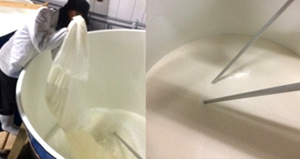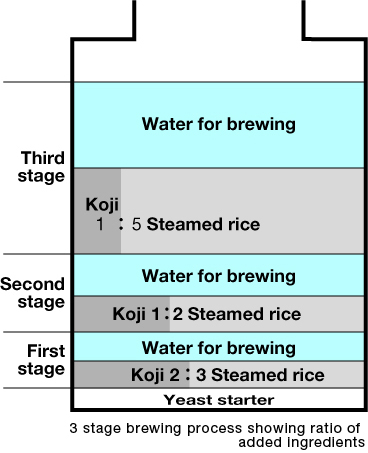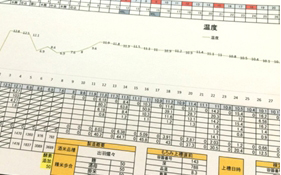An In Depth Guide to Tatenokawa
Volume 7 looks at part 3 of the brewing process: The mash and fermentation. Similar to the previous volume it contains a lot of technical terms, the majority of which can be studied in more detail in the various books that are available to buy.
Volume 7 - Brewing Sake Part 3: The Mash and Fermentation
The Mash

The mash is a vitally important stage where alcohol fermentation takes place. To make sake with a pleasant flavour and aroma you need not only well prepared raw ingredients: good koji and a yeast starter, but also a mash with a good balance of both glucose conversion and alcohol fermentation. Here at “TATENOKAWA”, our sake is made with highly polished rice, a 3-stage fermentation process and low temperature fermentation.
By highly polishing the rice we are able to control the off-flavours and by using the 3-stage fermentation method, whereby ingredients are gradually added to the mash, we create an environment where strong yeast can thrive without tiring. A mash fermented at low temperature tends to have better flavour and aroma and very little acidity.
We interviewed the brewers to learn more about the mash-making process and find out what they consider to be the most important points.
Q: Please tell us more about the gradual fermentation process.

A: The 3-stage process is described below.
Previous day Motosage: After around 13 days, once the yeast starter is ready it is transferred from the yeast starter room to the fermentation tanks.
Day 1 Soe(First Stage):Koji, water for brewing, and steamed rice are mixed into the yeast starter. The volume of the mash is now double.
Day 2 Odori(Resting Stage):Nothing further is added to the mash. Instead, we propagate the number of yeasts so that the mash can get to work.
Day 3 Naka (Second Stage):After 1 day of rest, we mix together the yeast-propagated mash, water for brewing and fresh steamed rice. The volume of the mash is now double that of stage 1.
Day 4 Tome (Third Stage):The last day of fermentation. We mix in fresh koji, water for brewing and steamed rice. The total volume is now double that of stage 2.
Fermentation

Our sake requires 13 days to make the yeast starter, 4 days to make the mash and then a further 28-30 days to complete the fermentation process.
The whole process is dependent on a number of factors such as the quality and variety of the raw ingredients; the koji and the air temperature; thus no two fermentations are the same and produce the same quality. In order to be as consistent as possible we take regular data readings: sake metre value, alcohol levels, acidity, amino acidity and glucose, and samples of the mash, and use these to manage the conditions for the fermentation.
The whole process is akin to that of using regular health checkups to maintain the body. Glucose conversion by the koji enzymes and alcohol conversion by the yeast takes place at the same time. For this reason, this is a type of fermentation that can produce high levels of alcohol and is thus referred to as multiple-parallel-fermentation. Both beer and wine are made using a single fermentation; in the case of beer, the glucose conversion and alcohol conversion are separate; in the case of wine, where glucose is already present, the glucose conversion stage is obsolete which makes sake brewing the more difficult process of the three.

